
Jupiter’s Demise
8-01: The front entrance to the Receipt, Inspection, and Maintenance (RIM) area, Çigli
AFB, Turkey. Note two missile bays. The missile squadron supported by Çigli AFB
consisted of 15 missiles (5 flights (sites), 3 missiles each). The RIM provided support in
terms of receipt and acceptance of new missiles and performing scheduled missile
maintenance and repairs. The RIM also maintained liquid oxygen and nitrogen
generating plants. (Bob Young, Dev Date: Spring 1963)
8-02: The first missile scheduled for destruction returns to the RIM area from one
of the launch positions. (Bob Young, Dev Date: Spring 1963)
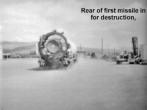

8-05: The first missile in for destruction passes by. (Bob Young, Dev Date: Spring
1963)
8-04: Rear of the first missile in for destruction, engine still installed, note two drivers
for the rear wheel set. (Bob Young, Spring 1963)
8-06: First missile in, beginning of Jupiter’s destruction. Note 1.2MT warhead was
removed while the missile was still positioned at the missile site in the mountains.
(Bob Young, Dev Date: Spring 1963)
8-07: Removing the mast in preparation for destruction of missile. Note Turkish flag
painted on the missile, along with the "Ibrahim 2" logo. (Bob Young, Dev Date: Spring
1963)
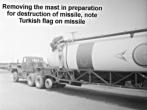

8-08: The missile masts which brought power to the Jupiter along with Jupiter LOX and
fuel loading components were stacked here. (Bob Young, Dev Date: Spring 1963)
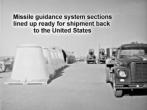

8-09: Missile guidance system (G&C) sections lined up and ready for shipment back to
the United States. Jupiter’s guidance package was constructed using discrete
transistors, diodes, etc. Jupiter had one vacuum tube on board, VR105-a 105-volt
regulator tube in the alternator circuits. (Bob Young, Dev Date: Spring 1963)
8-10: Preparing to load one of the missile guidance systems by forklift. These were all
returned to the United States. (Bob Young, Dev Date: Spring 1963)


8-03: First missile back from launch site for destruction goes rolling by. (Bob Young, Dev
Date: Spring 1963)
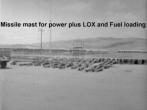





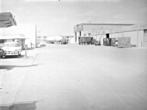

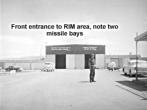

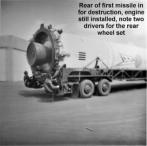

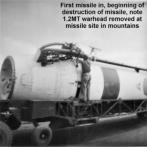

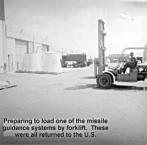

PHOTOS - Page 8




PHOTOS - Page 8
Jupiter’s Demise




















8-01: The front entrance to the Receipt,
Inspection, and Maintenance (RIM) area,
Çigli AFB, Turkey. Note two missile bays.
The missile squadron supported by Çigli
AFB consisted of 15 missiles (5 flights
(sites), 3 missiles each). The RIM
provided support in terms of receipt
and acceptance of new missiles and
performing scheduled missile
maintenance and repairs. The RIM also
maintained liquid oxygen and nitrogen
generating plants. (Bob Young, Dev
Date: Spring 1963)
8-02: The first missile scheduled for
destruction returns to the RIM area
from one of the launch positions. (Bob
Young, Dev Date: Spring 1963)
8-05: The first missile in for destruction
passes by. (Bob Young, Dev Date: Spring
1963)
8-04: Rear of the first missile in for
destruction, engine still installed, note
two drivers for the rear wheel set. (Bob
Young, Spring 1963)
8-06: First missile in, beginning of
Jupiter’s destruction. Note 1.2MT
warhead was removed while the missile
was still positioned at the missile site in
the mountains. (Bob Young, Dev Date:
Spring 1963)
8-07: Removing the mast in preparation
for destruction of missile. Note Turkish
flag painted on the missile, along with
the "Ibrahim 2" logo. (Bob Young, Dev
Date: Spring 1963)
8-08: The missile masts which brought
power to the Jupiter along with Jupiter
LOX and fuel loading components were
stacked here. (Bob Young, Dev Date:
Spring 1963)
8-09: Missile guidance system (G&C)
sections lined up and ready for
shipment back to the United States.
Jupiter’s guidance package was
constructed using discrete transistors,
diodes, etc. Jupiter had one vacuum
tube on board, VR105-a 105-volt
regulator tube in the alternator circuits.
(Bob Young, Dev Date: Spring 1963)
8-10: Preparing to load one of the
missile guidance systems by forklift.
These were all returned to the United
States. (Bob Young, Dev Date: Spring
1963)
8-03: First missile back from launch site
for destruction goes rolling by. (Bob
Young, Dev Date: Spring 1963)





















